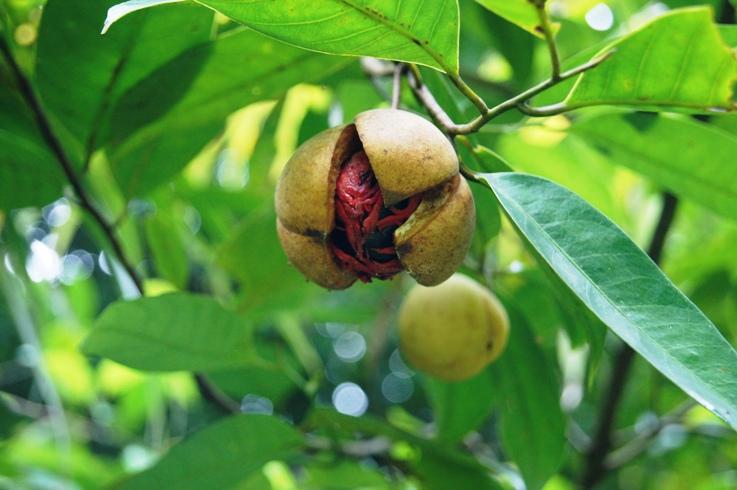
Nutmeg warehouse in Air Merah in Bantemi Village is one of the six largest warehouses for nutmegs in Kaimana Regency, West Papua Province. A pile of sacks is towering and flocking the 10 x 20 meters warehouse.
Pala (Myristica argentea Warb) has valuable economic value. It is no wonder when Europeans sought the spices for centuries. Following the Arabian embargo after the conquer of Constantinople in 1453, a Portuguese military, Alfonso de Albuquerque in 1511 was directed at Malacca. He erected a fortress which eventually could consolidated the Portuguese monopoly for the world nutmeg trade route. The triumph was fading away when the Dutch conquered Ambon and thus cast Portuguese away in 1605.
Read also: Boosting Nutmeg Productivity in Kaimana
Nutmeg has thus far become one of the prominent commodities in our country. Indonesia is deemed the largest exporter of nutmeg and fuli (nutmeg flower) with 75 percent nutmeg market shares in global market in addition to Guatemala, India, Nepal, and Laos. Indonesia exports nutmeg to the European Union, Vietnam, the United States of America, Netherlands, and Japan. Data from the Ministry of Agriculture’s Plantation Directorate General shows that the nutmeg export value is worth USD111.69 million in 2018 with a total of 20,202 tons of export volume.
Meanwhile, the 2016 data of Plantation Directorate General showed that nutmeg production in 2015 was 33,711 tons resulted from 168,904 hectares of planting areas with Maluku and Papua were the largest nutmeg producers. Nutmeg, particularly the seed and flower are used for various purposes ranging from pharmacy industry, perfume, and cosmetic.
Read also: Arguni Bay, Nutmeg Stock and Kaimana Forest Commodities
Nutmeg is also deemed a conservation plants. If compared to merbau wood and other types of hard wood, nutmeg is better conserved due to the absence of cutting period. Nutmeg continuously produced despite the 50 years of age. It is normal to see the very tall nutmeg trees with hundred years of age. Moreover, many growers plant their nutmegs on the backyard due to the economic value of nutmeg.
The dense nutmeg trees make the forest cover sustainable. If compared to fruit trees, nutmeg has thicker cover. Their roots survive despite the dried-up areas such as Arguni Bawah District in Kaimana Regency.
The village here has dusty soil during dry season. The reddish soil with sand is common sight. There is almost no big river existing due to the higher land. Therefore, there is no agriculture areas in the village. Only few seasonal vegetation like banana, chilly, or vegetable could survive here. However, despite the dried look, the villagers have never experienced water shortage. The soil is cracked during dry season, but water keeps flowing along the small rivers.
Read also: Retracting Egek, Looking at Moi Tribe’s Natural Deposit
The abundant water is inseparable from the forest cover condition. When the villagers built a tap water installation (the Pamsimas project), the dense nutmeg areas have rarely got sunlight. The clean water network was built by the locals could benefit the other villagers on the lower land.
“The water volume has never declined,” said Sakeus Tafre, the administrator of Manggera Village-owned Enterprise in Arguni Bawah District.
Editor: Nur Alfiyah & Leo Wahyudi









